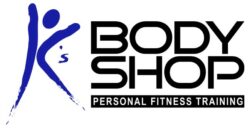What is functional fitness and should you be doing it?
Basically, functional fitness is about training your body to handle “real life” situations, also known as activities of daily living. Unlike conventional strength training exercises that are done to isolate specific muscles or body parts, functional fitness training utilizes integrated movement patterns that work the entire body. An example of an isolated exercise would be a leg extension, typically done to target the quadriceps muscles on the front of the thigh. An example of an integrated or functional exercise would be a squat, which uses many muscle groups in the trunk and lower body and mimics a movement pattern that we do countless times throughout the day. Every time you get yourself in or out of a chair, on or off the toilet, in or out of a car, you are doing a squat. Should you be doing functional fitness exercises? Yes. Yes, you should.
When should you do isolated exercises?
As a Corrective Exercise Specialist, I frequently will do some isolated muscle activation and strength training to correct muscle imbalances before progressing my client to more functional, integrated exercises. Isolated exercises are often necessary as a precursor to more advanced movement patterns after an injury or other overuse syndrome when specific muscles may be inhibited and weak, but are never all that’s needed in a person’s strength training program if they are interested in optimal performance or health! Leg extensions, leg curls, rotator cuff exercises, or ab crunches are all isolated movements.
When should you do functional exercises?
As frequently as possible 🙂 Human movement and transfer of strength is more about neurology than most people realize. Functional fitness teaches your body how to make different muscles work together in concert during more complex tasks, such as pushing, pulling, lifting, etc. Simply making a muscle strong in an isolated environment doesn’t teach your body how or when to recruit that muscle in real-life situations where you also need balance and control. Most functional exercises are done standing and integrate the entire body to some degree. Squats, deadlifts, bent over rows, and wood chops are all examples of functional exercises.
Why should you care?
In daily life, you aren’t strapped to a seat with your torso firmly pressed against a pad or bench to support you while you move a single body part. Many (actually, most) of our natural movement patterns involve the whole body to a certain degree. Some muscles are the prime movers doing the heavy lifting, while others act as stabilizers so that you can do heavy lifting. It isn’t just how much metal you can push around in the gym while most of your body is artificially supported; functional movement requires balance and control. I’ve seen many people who can bench press double their body weight or leg press triple their body weight (or more), but can’t do a simple body weight squat or push-up without compromise. These are the folks who throw their back out when they bend down to lift an object off the floor, even if the object isn’t very heavy.
How to Get Started With Functional Fitness
Begin with basic body weight exercises. If you can’t squat your body weight with good technique, you won’t be able to squat your body weight plus additional weight correctly, either. So, squats, hip hinges, push-ups (even if you have to start with your hands on a wall or countertop), single leg balance, etc. It’s more challenging than you think! Don’t push yourself to failure like traditional strength training – you want to stop while you are still performing each exercise with perfect technique. Pushing too hard just reinforces the compensatory movement patterns that you’re already dealing with: what’s already strong gets stronger, but what’s weak stays weak.
Still Need Help?
Get an assessment done by a qualified fitness professional so that you know exactly what your strengths and weaknesses are. If you’re in the Minneapolis area, you know my number! Call me today at 612-804-9496 to get started 🙂
